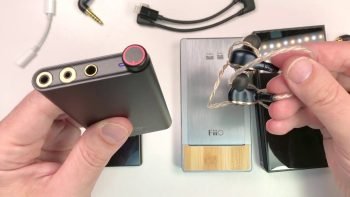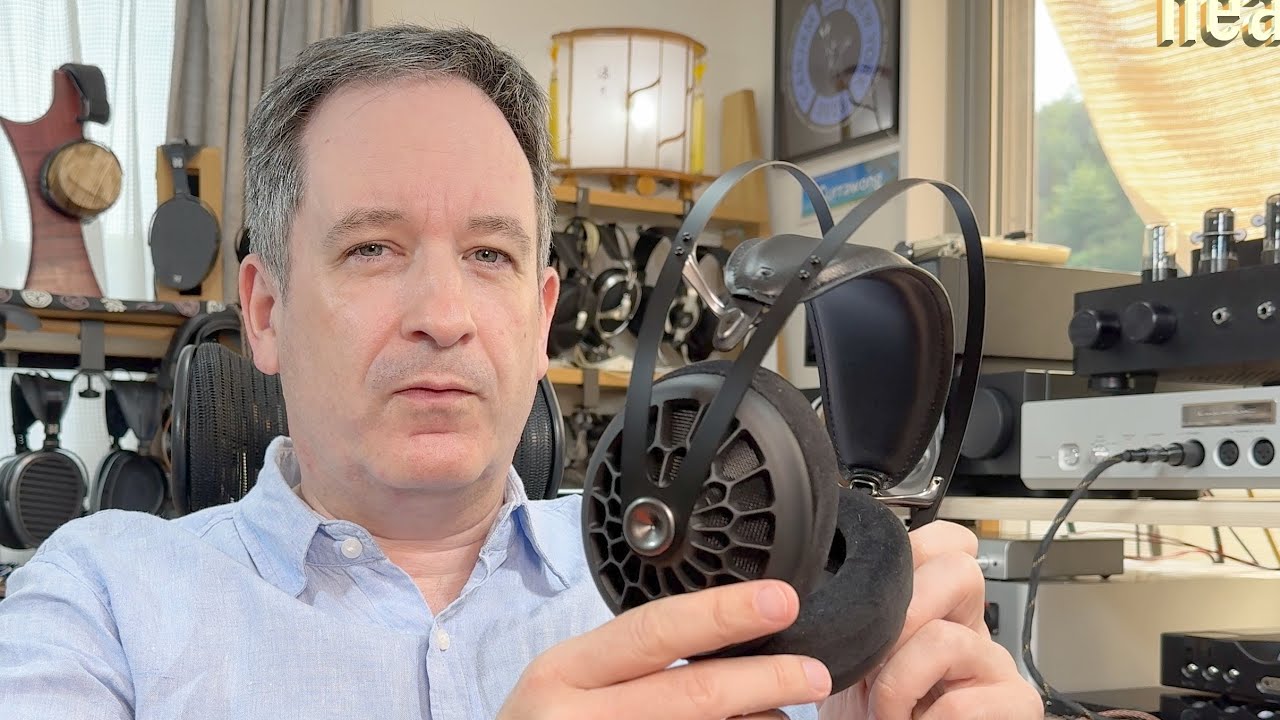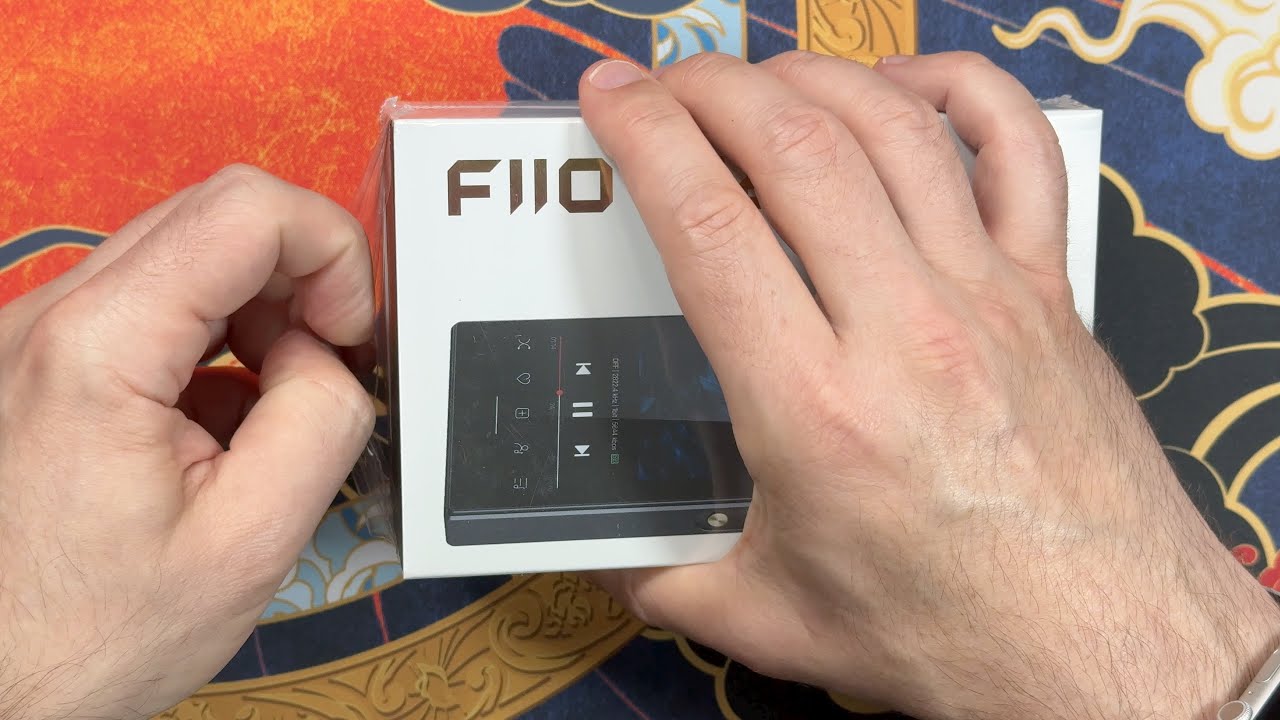Introduction
Thanks to FiiO for giving me a Q3 to review. It was sent without any preconditions whatsoever.
Given the number of good DAPs out there, it’s still a surprise that there is interest in DAC/amps in the portable world of Head-Fi. Despite this, some people still say that they like to use their BTR5 using the USB input for the sound quality, so it only makes sense that FiiO produce the Q1 and Q3.
Video Review
Design and Features
The Q3 is flat, and of a size that can comfortably fit behind a smartphone. It comes with old-style rubber bands for strapping it to another device, which are only practical to use with some old-style DAPs, given that modern smartphones have full-size screens nowadays. I can’t help thinking that FiiO should have done what iFi did with the xDSD, and include some 3M Dual-Lock instead.
Given it’s size and shape, it comes with a reasonably substantial 1800 mAh battery, giving it at least 8.5 hours of use time. It also has a useful maximum power output of 300 mW (at 32 Ohms, USB input, balanced output).
Input is via USB (using a Type C cable) or in line-in mode via the 3.5mm output, allowing it to be used as just an amp. To facilitate use with a smartphone, a switch on the back allows charging to be turned off. For USB input, short cables are included for USB-C to C, and Lighting to C, the latter of which only works with the Q-line of products (though may with others — I didn’t try).
Alongside that, there are two gain modes, two digital filter modes (which, for me, did audibly nothing) and a 6dB bass boost, which turned out to be too much even for the fairly flat/neutral-sounding Campfire Ara IEMs. Maybe if you’re one of those people who listen to hip-hop and rap, or possibly very old pop tunes, quite a bit of which is recorded with a surprisingly low amount of bass, this overkill bass boost will suit.
The gain modes were interesting, as even in high gain, the volume level was about right for even the quite sensitive Campfire Audio Andromedas, with only minimal hiss, a bit more than the BTR-5. The volume has to be turned up quite a bit before sound comes out, even in high gain, and maxes out easily with full-sized headphones before the sound gets very loud. This makes me feel it is best for IEM use, and unless you don’t listen loud, the output may be too low for full-sized headphones, especially if you listen to typical jazz and classical music that has a high dynamic range.
While FiiO touts the Q3 as having a THX AAA amplifier, known for their low distortion, I don’t consider balanced amplification to provide anything superior to a good single-ended design, and in and of itself wont necessarily make a cheaper product perform better than a more expensive single-ended design. It would make more sense that portable equipment all be single-ended, but as enthusiasts have gotten themselves all excited over “going balanced” for years, the manufacturers have had to follow suit.
In actual use, while the LED next to the volume knob indicates, in basic terms, whether the input is high-res or not, or whether it is charing (by turning red or pulsating) it lacks a battery level indicator, making its charge status uncertain.
Listening Impressions

I tested the Q3 via my iPhone and an M11 Pro from USB, primarily using the 4.4mm output. From that, I found nothing to fault the sound, with no harshness or distortion, making listening pleasant. If anything, I perceived the the sound as being a little bit mellow, which some people describe as being “warm”.
With the three FiiO hybrid IEMs on hand, the FH3, FH5, and FH7 (of which I accidentally picked up the FH7 when I made the video, due to it sitting on the same block of foam as a dozen other pairs), the Q3 provided a distinct jump up in bass output and clarity from an Apple Lightning dongle from my iPhone X, something I’d consider a primary consideration for someone looking to buy a DAC/amp like the Q3.
I also tested the Q3 with higher-end IEMs, such as the Campfire 2020 range (Ara, Andromeda and Solaris), as well as the Final A8000. While I don’t expect these pairings to be normal ones, I wanted to see in more absolute terms how the Q3 performed against other devices.

Not surprisingly, while the drive of the IEMs was excellent, the level of detail retrieval from music with which I had a lot of experience, such as Jazz in the New Harmonic by David Chesky, which has the most incredibly nuanced percussion, from the Q3 was not as good as with either FiiO’s higher offerings, such as the M11 Pro, or other more expensive DAC/amps, such as the iFi xDSD or Chord Mojo.
The better power output of the Q5S with AM3A module, for example, I felt gave slightly better results, though it’s main advance was that it could power full-sized headphones to quite loud levels, something the Q3 can’t do.
Using the USB input of the BTR5, I felt that it has a comparable sound quality to the Q3 in this mode, though it is primarily intended to be used wirelessly, rather than wired.
Where the Q3 shines is with how it drove the IEMs I had on hand, at the same time making for easy and pleasant listening. Paired up with the FH7 and the new LC-RE cable worked out very well. That combination is pretty good for rocking out, such as when I want to break out music such as Sonny Landreth’s Grant Street, which was recorded live, and doesn’t benefit from high-end gear. The more mellow Q3 very slightly takes the edge off what can be a bit of a sharp treble from FiiO’s hybrid IEM models, while maintaining good control over their drivers.
Conclusion

The Q3 makes for a solid, inexpensive IEM DAC/amp, and with a pair of FiiO IEMs, a not unreasonably expensive portable rig. If don’t want to use Bluetooth, or full-sized headphones, yet want something that can slip into the inner pocket of a bag to use with a computer or phone, then the Q3 fits the bill. I reckon it makes for a noticeable step up from a Lightening audio adaptor, and very likely many USB-C audio dongles, especially when you have IEMs that sound best with a bit of amplification behind them.

















